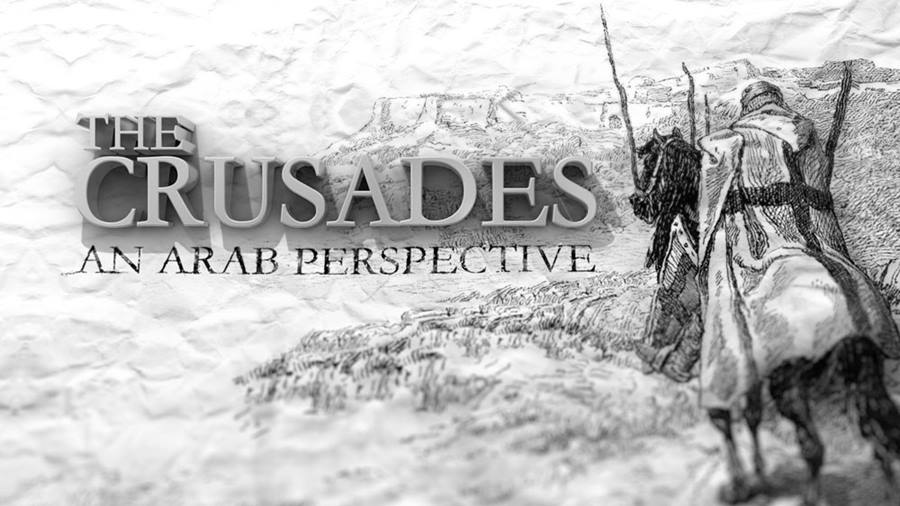Thu 23 January 2020:
The Crusades: An Arab Perspective is a four-part documentary series telling the dramatic story of the Crusades seen through Arab eyes, from the seizing of Jerusalem under Pope Urban II in 1099, to its recapture by Salah ad-Din (also known as Saladin), Richard the Lionheart’s efforts to regain the city, and the end of the holy wars in 1291. In part one, we explore the history of the First Crusade and the conquest of Jerusalem.
The Crusades are the epitome of “holy war”. Yet the roots of this 200-year conflict lay not just in religion, but also in the economic condition of medieval Europe.
“Around the time of the Crusades, Europe experienced several droughts which made people lose faith in everything,” says Antoine Domit, history professor at the Lebanese University.
A struggle between church and state was taking place in Europe: Who would rule over the people of Europe, the pope or the king?
After centuries of European domination, largely through the armies of imperial Rome, the Mediterranean basin had fallen firmly under Muslim control. So the Muslims surrounded Europe, from Spain in the west to the eastern Mediterranean in the east.
“For Europeans, the east is ‘A Thousand and One Nights’. It represents wealth, beautiful clothing, young concubines, thriving public life, songs and culture,” says Elias al-Kattar, history professor at the Lebanese University.
While the Muslim east lived in prosperity, Europe had slipped into relative poverty and conflict.
“Medieval western society was a feudal society, which meant that you had the aristocracy in charge of a large amount of people that had no land possessions,” says Jan Vandeburie, of the School of History, University of Kent.
Ishaaq Abaid, history professor at Ain Shams University, explains that “only one percent of people who had the titles of ‘count’, ‘duke’ or ‘baron’, owned all the agricultural lands. Ninety-nine percent of the European population were called serfs and worked on these lands.”
Most Europeans in the 11th century lived in poverty and were struggling to survive, while war and conflict among knights were part of everyday life.
Pope Gregory VII and the idea of a holy war
On the other side of the Mediterranean lay relative prosperity and the cultural riches of the Muslims world, but the glittering facade hid deep political and religious divisions. From the mid-ninth century, the Abbasid Caliphate had gradually come under the control of different dynasties. The caliphs, meant to be the universal leaders of Islam, were no more than puppets in the hands of ministers, army commanders and even servants.
The crusaders didn’t outnumber the population or have greater force and fighting skills. Yet, they emerged victorious because of the Muslims’ demographic and political divisions.
The Muslim Seljuk Turks began expanding their empire in every direction. The most significant and serious expansion was in Asia Minor against the Christian Byzantine Empire. And after the Battle of Manzikert in 1071, the Seljuks moved closer to Constantinople, the great capital of the Byzantine Empire. They took Romanus Diogenes IV as a prisoner and his successor, Emperor Alexios Komnenos, called for help from Western Europe.
“Pope Gregory VII saw this as the perfect opportunity to realise his dream of controlling the Church of the Holy Sepulchre and of gathering all the armed forces under papal leadership in a campaign he called, ‘the Lord’s Project’,” says Qassem Abdu Qassem, head of the history department, Zaqaziq University.
Zubeida Atta, a history professor at Helwan University, says: “Pope Gregory has the idea of a holy war. It was he who came up with the idea of sending a campaign to the east to recapture the tomb of Jesus Christ from the hands of the Muslims, whom he believed had taken it by force.”
When Pope Gregory died in 1085 before turning his project into reality, his ambitious successor, Pope Urban II picked up the baton.
“He was a fanatic and believed deeply in exporting Catholicism and in the militarisation of Christianity,” says Muhammad Moenes Awad, history professor, Sharjah University.
The First Crusade: ‘It’s God’s will’
He addressed the spiritual anxieties of the common man and promised penance for those who would go and fight in the holy war.
“Fighting is your duty, you have to continue fighting to defend our property, our lands. Our property that is yours. We have to combat these non-believers and reclaim our holy land. It’s God’s will.”
Pope Urban II drew up a schedule for the first campaign which should set out in the summer of 1096. But some ignored the holy command and found a leader who would immediately guide them to the east: an old monk called Peter the Hermit.
These first enthusiastic, but undisciplined, Christians to head towards Jerusalem were crushed by the Muslim Seljuks in Asia Minor.
But now, in the summer of 1096, much stronger, larger and more organised forces were gathering and advancing eastwards. These armies forming the First Crusade were commanded by figures of European nobility.
“The armies set off from Western Europe and headed towards the Holy Land. Some went to defend their reputation, while others sought to acquire new land and build an empire,” says Abdu Qassem.
By the end of 1096, the European armies started arriving in the Byzantine capital, Constantinople.
According to Professor Said al-Bishawy of the Open University of Jerusalem, the crusaders swore allegiance to the Byzantine emperor, Alexios Komnenos, and promised to return the lands taken by the Seljuk Turks. This bargain was necessary for them to be granted permission to head east.
After crossing the Bosporus, the crusaders marched towards the Seljuk’s capital in Asia Minor, the city of Nicaea. True to the oath they had sworn to the emperor, the city of Nicaea was returned to the Byzantines. But as the crusaders continued their successful march in Asia Minor, their holy task of taking Jerusalem was momentarily set aside some of their numbers made a detour to the city of Edessa.
One of the commanders, Baldwin of Boulogne, headed to Edessa which became the first crusader state to be founded in the east.
“The taking of Edessa shows that the crusaders weren’t guided by any religious dictates. Crusaders came under the pretence of freeing the Holy Sepulchre from infidels and non-believers. But Edessa wasn’t on the way to Jerusalem, had no tomb of any of Jesus’ disciples and is not a place of pilgrimage,” says Muhammad al-Makhzoumy, history professor at the Lebanese University.
The main army, however, marched on to the walls of Antioch, a city nicknamed “the cradle of Christianity” as the term “Christian” first originated there.
In June 1098, Antioch fell and was ruled by Bohemond the Norman, Prince of Taranto.
When the crusaders first arrived, they’d sworn their allegiance to the Byzantine emperor. But when they took Antioch, they didn’t return it to the emperor as promised. They kept it for themselves.
After Antioch, the armies finally headed south, towards Jerusalem.
Conquering Jerusalem: ‘An infamous massacre’
“They released the pent-up tensions of three years on the march and having finally achieved their spiritual goal. So really it’s a situation where the crusaders wished to purify the city and take it back for themselves,” says Jonathan Phillips, history professor at Royal Holloway, University of London.
According to Antoine Domit, they started “with an infamous massacre. They killed people in the streets, in their houses and in alleyways.”
Venderburie explains that it was very difficult for the crusaders to distinguish between local Christian, Muslim, and Jewish population because they all looked the same to them, they all “looked like Arabs”.
“The success of the First Crusade in conquering Jerusalem is important not only because it realised a European dream, but also because it punished the Muslims and Arabs for their divisions and infighting,” says Abdu Qassem.
With the capture of Jerusalem, the First Crusade had achieved its objective. But this initial success would not last, it was to be merely a dramatic opening scene in a far longer struggle. And as the Muslim revival began, so the ground was laid for another two centuries of the Crusades.
Source: Al Jazeera
Shock: The First Crusade and the Conquest of Jerusalem | The Crusades: An Arab Perspective Ep1
Revival: The Muslim Response to the Crusades | The Crusades: An Arab Perspective Ep2
Unification: Saladin and the Fall of Jerusalem | The Crusades: An Arab Perspective Ep3
Liberation: Acre and the End of the Crusades | The Crusades: An Arab Perspective Ep4
Think your friends would be interested? Share this story!





